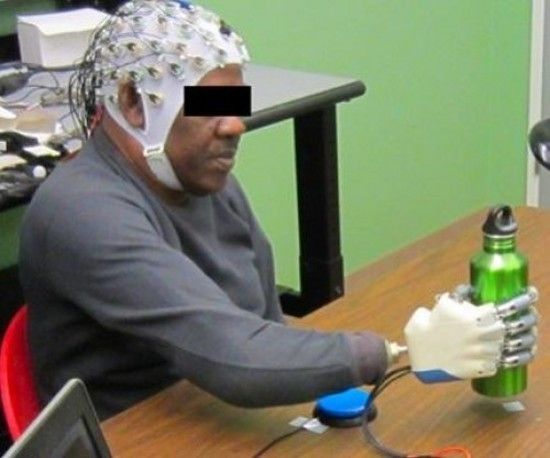In a series of experiments, a 56-year-old man relied on nothing but his thoughts to control a high-tech bionic hand attached to his body in the place of his missing right arm and command it to grab hold of various object, among which a bottle and a credit card.
True, this man wasn't the first amputee ever to use their thoughts to make a prosthetic limb move and complete very specific actions. Au contraire, plenty more experiments of this kind have been carried out over the years and others will surely follow.
The reason this 56-year-old and his high-tech bionic hand are grabbing headlines is that, to control it, the man did not rely on implanted electrodes or other sensors buried inside his body to collect electrical impulses from his brain and turn them into commands for the prosthetic limb.
Instead, the man got help from a brain-machine interface - a computer program, if you will - developed by a research team at the University of Houston in the US. This computer program allowed for an 80% accuracy rate when using the bionic hand to grab objects.
Interestingly enough, specialist Jose Luis Contreras-Vidal argues that, with a little bit of practice and a more finely tuned algorithm, the success rate of such experiments could very well be one of 100%.
How the brain-machine interface was developed
The scientists say that, to develop the program, they asked able-bodied volunteers to grab various object and kept tabs on their brain activity while they were completing these tasks. The monitoring was done with the help of electrodes not implanted in the brain, but attached to the scalp.
In a report detailing their work, the University of Houston specialists behind this research project explain that the focus was on the study participants' motor cortex and on brain areas known to be involved in decision-making and action observation.
Data obtained in this manner allowed the scientists to develop their brain-machine interface designed to decode the 56-year-old's motor intentions and turn them into commands for the bionic hand. As with the other volunteers, there was no need to use implanted electrodes to record brain activity.
“Here we show that it is feasible to extract detailed information on intended grasping movements to various objects in a natural, intuitive manner, from a plurality of scalp EEG [electroencephalogram] signals,” the University of Houston team explained in an interview.
The scientists say that, since it does not require that electrodes be implanted into a patient's brain or the use of any other sensors that must be placed inside the body, their method of controlling prosthetic limbs via thoughts is much safer and, consequently, preferable.

 14 DAY TRIAL //
14 DAY TRIAL // 

